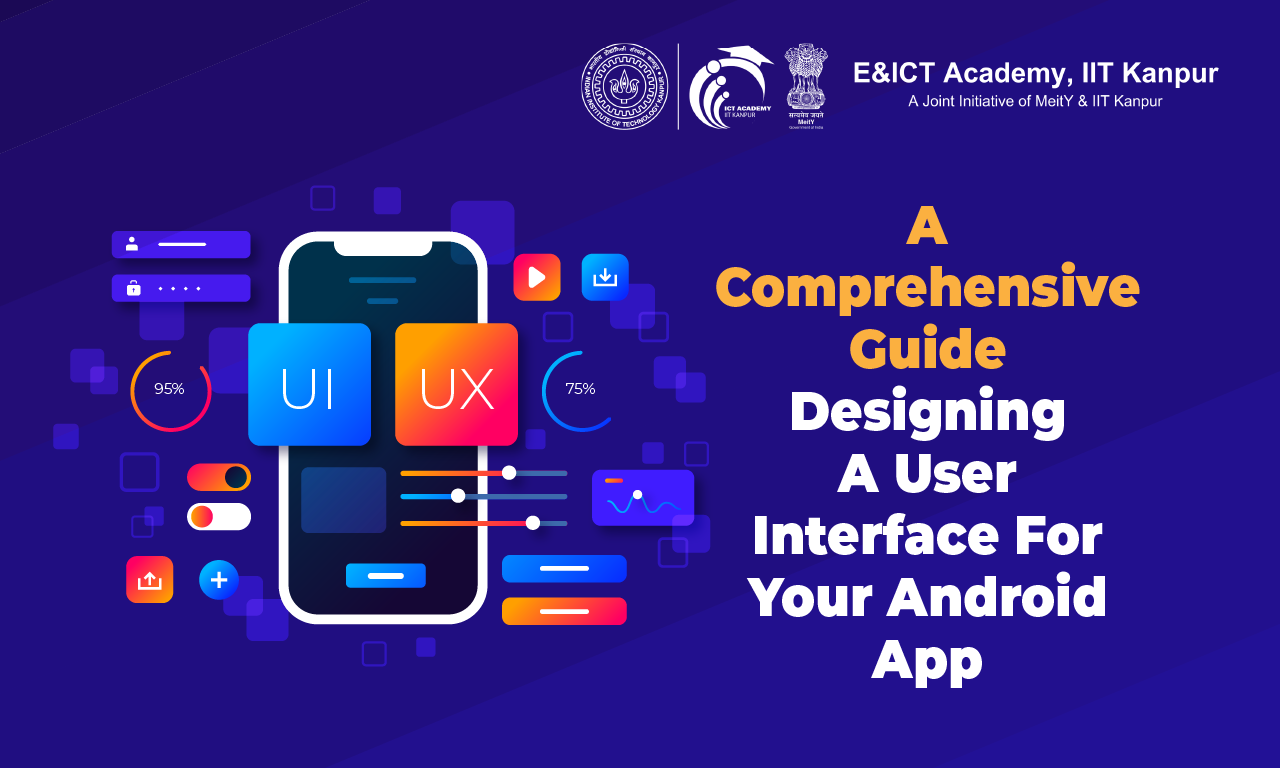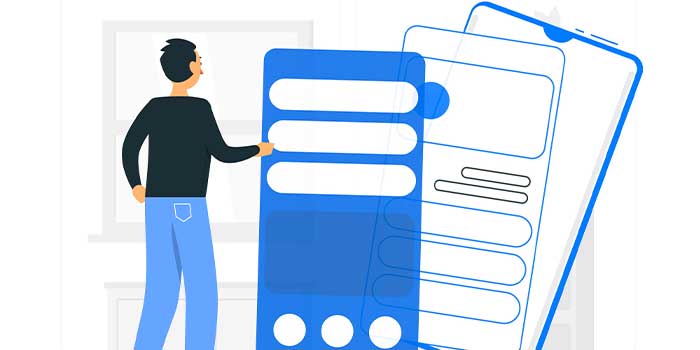A Comprehensive Guide: Designing a User Interface for Your Android App

The user interface (UI) of your Android app is more than just a visible illustration. It plays a critical function in attracting users, providing a coherent and intuitive experience. A properly-designed UI enhances usability, ensures user interaction, and leaves a long-lasting experience. In this comprehensive guide, we will take you through the method of designing a user interface for your Android app, covering vital ideas, realistic suggestions, and in-depth insights to help you create an excellent user interface that sets your app apart from the competition.
Understanding User-Centric Design
Before diving into the actual design process, it is important to comprehend the idea of a user-centric design layout. User interface design focuses on creating an interface that caters to the user’s needs, wishes, preferences, and behaviors. By putting the user in the center of your design process, you can create an interface that efficiently addresses their wishes and presents a top-notch consumer experience. Start by identifying your target audience and conducting thorough studies to recognize their expectations and requirements. This will guide your design selections and ensure your UI resonates with your users.
Delve deeper into user-centric design ideas. Discuss the significance of conducting user research, inclusive of methods such as surveys, interviews, and user testing. Emphasize the importance of understanding the consumer wants, options, and behavior to create an interface that resonates with them. Provide practical examples and case research showcasing how successful apps have implemented user-centric design concepts to create great user interfaces.
Planning Your User Interface
An effective UI interface starts with cautious planning. This stage entails defining the objectives and goals of your app, finding information about its target audience, and figuring out the capabilities and functionalities it’ll provide. By defining your app’s purpose and target market, you may make knowledgeable design selections that align with the consumer’s wishes. Sketch out a rough layout of the displays and display screen flow to visualize the user’s journey. Consider incorporating users’ remarks and conducting usability assessments to collect valuable insights to inform your design selections and assist you in creating an interface that sincerely meets your customers’ expectations.
Expand at the planning segment, presenting specific guidance on defining app goals and objectives. Discuss the technique of creating user personas to understand the target audience. Explain how conducting a comprehensive evaluation can help you become aware of specific capabilities and functionalities for your app. Provide tips on sketching out the app’s layout and screen flow, emphasizing the importance of user remarks and user testing during the planning phase.
Creating Wireframes and Prototypes
Wireframing is fundamental in the UI layout process because it permits you to make an outline of your app’s interface. It presents a visual representation of the structure and layout of your app, displaying the placement of key factors and interactions. Begin by portraying low-constancy wireframes that outline your app’s essential structure and functionality. This helps you know the app’s structure without getting distracted by visual data. Once the wireframes are finalized, intuitively create prototypes utilizing equipment like Adobe XD or Figma to simulate the user experience and gather comments from partners and potential users. Prototyping permits you to approve your design choices, test the usability of your interface, and make fundamental iterations before moving into the visual design stage.
Give a step-by-step guide on developing wireframes, beginning from low-fidelity outlines to more specified representations. Discuss the significance of wireframes in visualizing the app’s structure and interaction flow. Clarify how interactive models help simulate the user experience and gather valuable feedback. Incorporate guidelines on choosing the right prototyping equipment and procedures for developing effective and sensible prototypes.
Visual Design and Branding
Visual design performs an important function in making your app visually appealing and consistent, together with your brand identity. It involves integrating color, font, graphics, and other visible aspects to produce an aesthetically pleasing interface. Establish a color palette that reflects your brand and complements the goals of the app as a starting point. Pick hues that promote the desired emotions while maintaining clarity. Choose legible fonts that are suited for your app’s aesthetic. Pay close attention to the hierarchy of the font to direct users’ attention and improve readability. A unified and memorable user interface is made possible by consistent graphic elements and branding, which strengthens your brand recognition.
Layout and Navigation
When creating the layout of your Android app, the goal is to build a well-organized and intuitive structure that allows customers to navigate the app easily. The layout should be visually attractive, easy to recognize, and consistent throughout the app. Utilize grid structures and alignment strategies to create a balanced and visually attractive layout. Consider the usage of Android UI components and layout patterns, consisting of bottom navigation bars or tabbed navigation, to offer familiarity and enhance usability. Ensure that the navigation is clear and intuitive and provides customers with a smooth easy access to the app’s features and content. An organized and logical layout enhances the user experience. It encourages customers to collaborate with your app.
Go into detail about developing a well-organized and intuitive structure for your app in the layout and navigation section. Discuss the importance of information architecture and how to build a logical content hierarchy. Explain how grid systems and alignment tactics can be used to produce balance and visual appeal. Give examples of common Android UI components and layout patterns, and explain which tools are suitable for generating interactive prototypes.
Responsive Design and Adaptability
In a world with numerous Android devices available in different sizes and resolutions, it’s crucial to design your app interface to be responsive and adaptable. Responsive design ensures that your app operates efficiently throughout different display screen sizes, from small smartphones to large tablets. Implement responsive layout ideas, including fluid layouts, scalable elements, and adaptive content to ensure a consistent and standard user experience in all devices. Regularly check your app on various devices and use responsive frameworks like Constraint Layout to get the best results. By creating a responsive interface, you can offer a seamless experience to customers, irrespective of the device they may be using.
Expand on the concept of responsive design and its importance in catering to various Android devices. Discuss the difficulty posed with different screen sizes and resolutions. Provide insights into imposing fluid layouts, scalable elements, and adaptive content to ensure consistent user experience across all devices. Offer realistic tips on trying out and optimizing your app for various devices, highlighting using responsive frameworks and tools.
Iterative Design and User Testing
UI design is an iterative system that flourishes on development and user feedback. It is critical to involve users during the design process and gather their feedback at different stages. Conduct usability testing to validate your design , identify pain points, and figure out areas that require development. Incorporate user feedback and iterate to your layout design based on the insights gained. This iterative approach guarantees that your app’s user interface evolves to meet the needs and expectations of your target market. By actively taking note of users and refining your layout based on their comments, you may create a consumer interface that resonates with your audience and provides incredible user experience.
Elaborate on the iterative design process, emphasizing the importance of continuous improvement and user feedback. Discuss various testing strategies, consisting of A/B testing, usability testing, and beta testing, and their role in validating design choices and figuring out areas for development. Provide Guidance on incorporating user remarks successfully and making iterative design selections primarily based on insights from testing.
Conclusion
Designing a user interface for your Android app requires planning and in-depth understanding of your audience. By Following the guidelines and steps outlined in this guide, you can create a visually attractive, intuitive, and user-friendly interface that enhances the general consumer experience. Remember to constantly incorporate feedback from users testing and embrace an iterative design technique to improve your app’s interface. With a nicely-designed user interface, your Android app will attract customers, foster engagement, and offer them a continuing and enjoyable experience.
Recommended Courses

Basic Programming using Python

Basic Programming using Python

Compiler Design, Analysis, & Optimization

Compiler Design, Analysis, & Optimization

Data Structures & Algorithms using Java

JAVA (Basic and Advanced)

Linux

Linux



